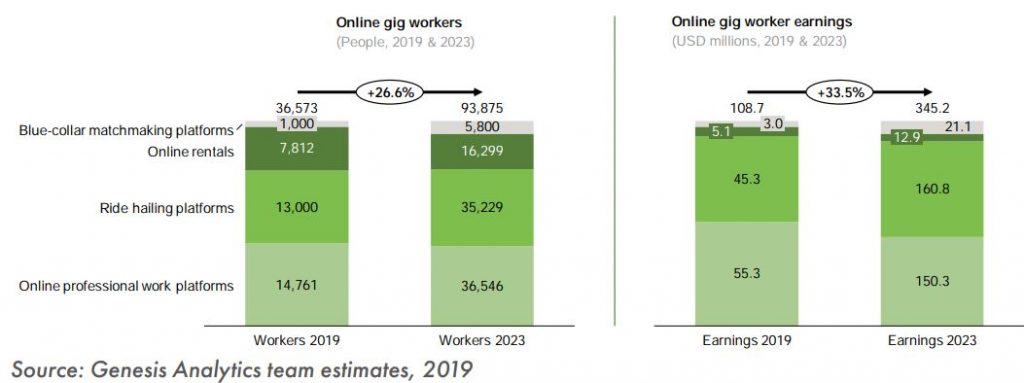Kenya’s gig economy is projected to reach $345 million and employ a total of 93,875 by 2023, according to a report on the current state and the industry’s future outlook.
“However, this growth is not quick enough to effectively address the unemployment gap in the country, reads the report.
Mercy Corps’ Youth Impact Labs (YIL) report dubbed ‘Towards A Digital Workforce: Understanding The Building Blocks Of Kenya’s Gig Economy’, the online gig economy in Kenya operates across several sectors, including driver and rider services, personal and household services business services, delivery services, professional services, hospitality and medical care.
According to the Kenya Bureau of Statistics, on average, 500,000 to 800,000 young Kenyans enter the job market annually. However, the economy is unable to provide employment opportunities.
“Overall growth of the sector in terms of earnings and workers will be 33 per cent and 27 per cent, respectively. Key growth ‘sectors’ in terms of earnings will include ride-hailing platforms (37 per cent average annual growth) and blue-collar matchmaking platforms (63 per cent average annual growth),” reads the report.
The survey found that Kenya’s gig economy is driven by the demand side, especially in urban households’ transport and domestic service uptake.
“While demand for gig workers in the transport and domestic industries has grown as a result of high uptake of platforms such as Uber, Safe Boda and Lynk, uptake of online professional services offered by gig workers is still very low, especially among corporates due to misperception of poor quality.”
The report estimates that the total size of the online Kenyan gig economy, as at 2019, is $109 million and employs a total of 36,573 gig workers.
This is compared to the offline Kenyan gig economy, estimated to employ 5.1 million workers accounting for $19.6 billion in 2019 across six key sectors, namely agriculture, manufacturing, trade & hospitality, construction, transport & communication and community, social & personal services.

Drivers of the gig economy
- Ride hailing platforms
- Online rentals
- Online professional work platforms
- Blue-collar matchmaking platforms




